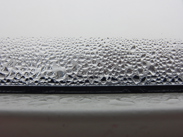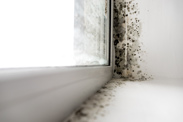We know that damp and mould is a serious issue for the social housing sector and is likely to be a particular problem in winter. Living with damp and mould can also be distressing and we’re committed to making sure we know whenever there’s a damp and mould issue affecting your home - so we can put things right.
We’ve improved our processes so that anyone can report a damp and mould concern to us quickly and easily. When we receive your notification we'll arrange to come and inspect your home and put in place measures to keep your home safe and dry.
Reporting damp and mould
You can report any concerns to us via the webchat facility or the customer portal on the home page of our website. You can also report if via this link here
We know that the cost of living is challenging so if you’re struggling you can contact our welfare & benefits team via our customer portal or email them directly at welfare@housingsolutions.co.uk – the team will get in touch with you to offer further advice and support.
A helpful booklet that gives tips on how to prevent mould
Mould can be caused by condensation. This section explains how, where and why mould forms and gives tips on how to prevent it occurring and how to deal with it, if you find it in your home. You can also download a handy booklet here
Condensation
Condensation is where warm, moist, air meets a cold surface, and will appear as water droplets on cold surfaces such as walls, windows and mirrors. This is normally not a fault with the building or structure of your home. Condensation on windows should be removed as soon as it forms.
- The three main causes of condensation are:
Moisture produced by everyday activities
Not enough ventilation
Cold surfaces inside the home
Where is condensation most likely to form?

In kitchens and bathrooms where cooking and washing generate steam that condenses on any cold surface, and in bedrooms overnight. In unheated rooms with cold walls or in any place where the flow of air is restricted such as corners of rooms, behind or under furniture, or on windows behind curtains.
What is mould?

Mould is if often black in colour, and grows in moist areas, usually as a result of condensation. In kitchens and bathrooms where cooking and washing generate steam that condenses on any cold surface, and in bedrooms overnight. In unheated rooms with cold walls or in any place where the flow of air is restricted such as corners of rooms, behind or under furniture, or on windows behind curtains.
What can you do?
1. Minimise the moisture in your home
• Open a bedroom window in the morning to let the air out.
• Most windows have trickle vents, small ventilators, in the top of the frame. If these are left open they reduce the risk of condensation forming on the glass.
• In the kitchen and bathroom where walls can become wet, it’s important to ensure these rooms are ventilated every day by opening a window, or using an extractor fan during cooking/ washing, until the room is dried out.
• Keep lids on pans when cooking.
• Avoid drying clothes on top or in front of radiators, instead dry them outside or in a room with an open window.
• If you use any tumble drier, it will spread a lot of moist air around your home. Ensure it’s vented to the outside air or otherwise make sure this air is let out.
2. Improve air flow in mould prone areas
• Keep furniture at least 50mm away from external walls.
• Prevent damp air spreading, keep kitchen/ bathroom doors closed when the room is in use.
• Homes that are overcrowded with possessions have less air circulation and mould becomes more likely.
• If you have an extractor fan, ensure that it works and it is always used during and after moisture-generating activities like bathing, cooking and drying laundry.
3. Managing the home
• If you can, keep your home heated to 16 degrees celsius.
If you have a loft, check it’s insulated, and the insulation isn’t being squashed by items.
• Make sure to wipe condensation away and dry the cloth outside the house. You can open the window and use a squeegee to make this easier.
4. Heating your home safely
For your health and safety do not burn solid fuel or waste materials. You need our permission to fit a wood burner: these are very dangerous unless correctly
installed by a qualified contractor. You must apply for our permission, and we will assess each application
What to do if you have mould
Wipe condensation from surfaces with a dry cloth and open the window.
Wipe small dots of black mould with a specialist mould cleaner, or fungicidal wash. Follow safety instructions carefully – You may need to do this at least
twice a month during the winter.
Types of Damp
Penetrating Damp
This can be caused by leaks from windows, roofs or plumbing. This dries once the leak is fixed and will rarely leave black mould. On plastered surfaces it normally forms curved shapes and paint may flake off.
Rising Damp
Rising damp is extremely rare and is caused by water soaking up a wall by no more than 1 metre. It almost never causes black mould.
When to contact Housing Solutions
- If you have followed the advice above but still have mould
- If an extractor fan is missing, doesn’t work well, or only works when light is switched on.
- If you have a bathroom without a window or extractor fan.
- If you have a loft with insulation less than 300mm / 12 inches thick, or unevenly laid, or squashed by possessions, or the loft hatch is uninsulated, we will talk to you about arranging to take your possessions out of the loft, and make sure the loft and the hatch are insulated correctly.
REMEMBER
Heating & ventilation
are the keys to prevention


